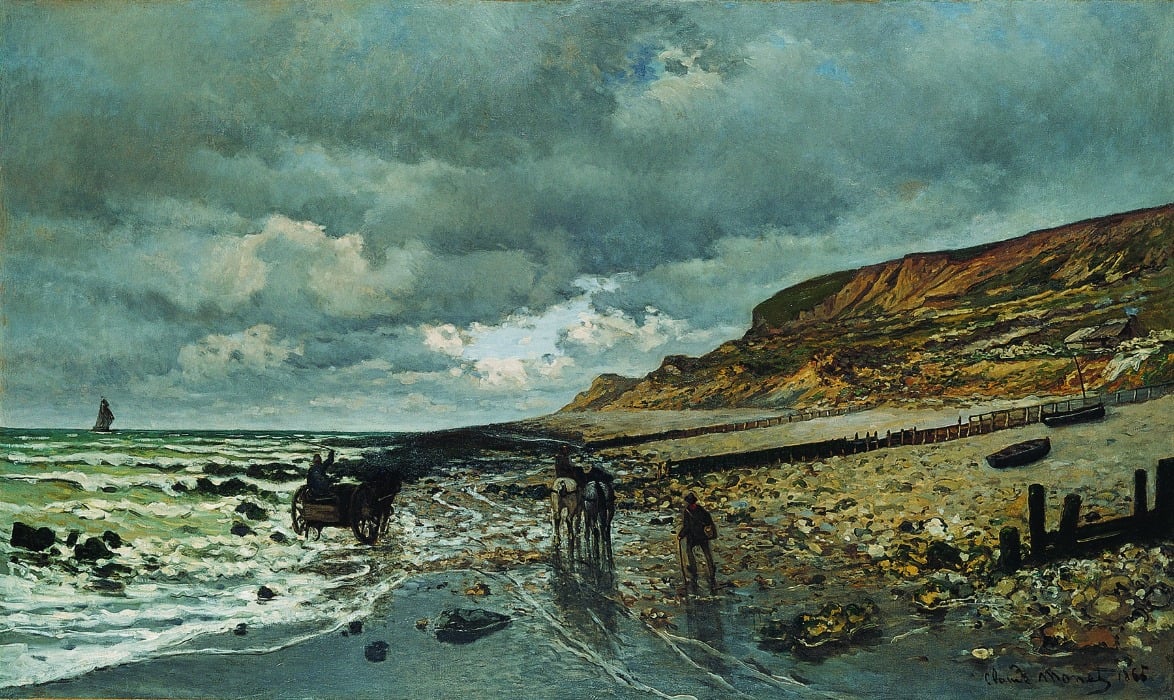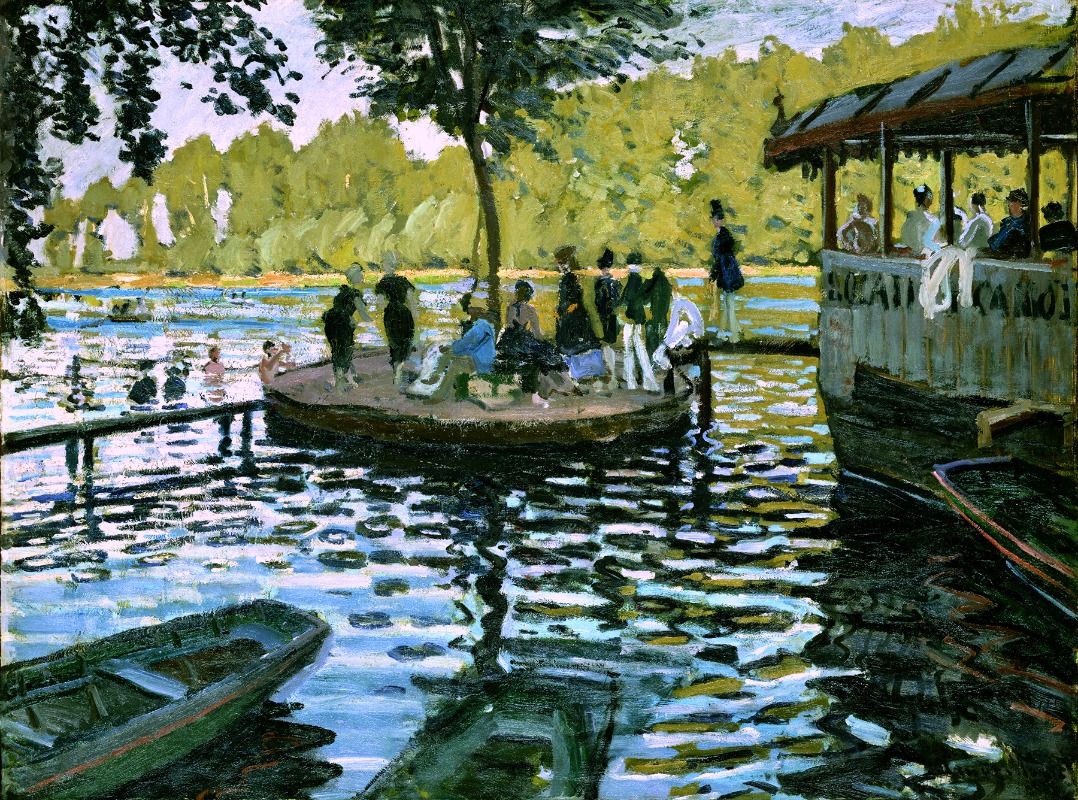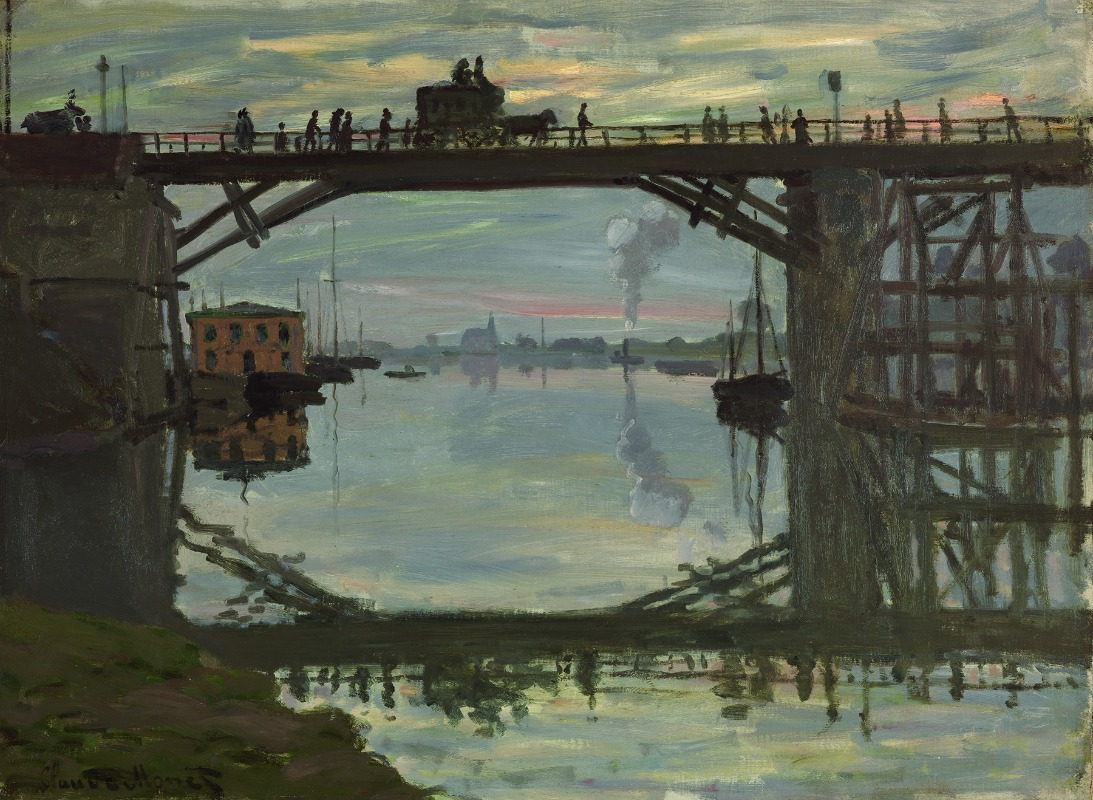Watching Monet Become Monet
ArtandSeek.net October 14, 2016 17The Kimbell Art Museum has assembled 55 artworks from private collections and museums around the world to create its new show called ‘Early Monet.’ But these are not the famous, later masterworks by the great Impressionist Claude Monet. Local All Things Considered host Justin Martin sat down with Art & Seek’s Jerome Weeks to ask why this exhibition would still interest fans of Impressionism and even specialists.
Jerome, I like pretty paintings as much as the next person, but this new exhibition at the Kimbell – ‘Early Monet’? Monet’s an Impressionist, so this must be the Kimbell’s third Impressionist show in two years?
You mean they’re popular with people who otherwise don’t care much about art?
Case in point: ‘Early Monet’ brings together two fragments of an abandoned work. In exhibitions, we often see drawings for commissions that never came through for an artist, but in this case, these canvases are all that remain of a hugely ambitious work that Monet simply couldn’t finish in time for a Salon in 1865, so he gave it up. Calling them ‘fragments’ doesn’t do justice to one, nearly 14-foot tall section of ‘Le dejeuner sur l’herbe’ — which was rolled up, forgotten and badly damaged. Both pieces belong to the Musee d’Orsay but are not usually included in a typical Impressionist or Monet exhibition, so it was a surprise to see what is, all at once, a fascinating oddity, an impressive piece of unfinished work and a lost shot at early fame for Monet.
So what’s the show about?
If people know art history, they know it’s Monet’s little painting from 1872 of a foggy harbor at daybreak that gave Impressionism its name and helped ignite a furor. Monet titled his painting as an afterthought — he thought of the painting more as a sketch, so he gave it a generic name: ‘Impression, Sunrise.’ A scornful critic used that title to dismiss this “gang” of younger artists. They couldn’t really paint, they were just splashing their ‘impressions’ onto canvases.

‘La Pointe de la Heve at Low Tide,’ oil on canvas, 1865
So that’s when it all starts?
So what do you see?
I see a strikingly realistic, almost beautifully somber beach scene.
Now look at this, painted only four years after that beach scene. It’s ‘Bathing at La Grenouillere,’ La Grenouillere was a popular boating and bathing spot on the Seine river. If I asked you — and you’d never seen this before — what style of art is it, what school, what era, what would you say?
I’d say Impressionism. There’s that soft focus, the kind of dappled brushstrokes with what looks like a sponge.

‘Bathing at La Grenouillerre,’ oil on canvas, 1869.
There’s not much detail. He’s broken them up into just flicks and dots of paint.
But then, what’s even more surprising, the same year he painted ‘Bathing at La Grenouillere,’ he painted a still life of flowers and fruit.
It’s practically a photograph.
So you’re saying, Monet wasn’t consistent, he just kept mucking about?
Kind of, yeah. But he kept obsessively mucking about the same things. It’s amazing to see that at 17, he’s already painting water scenes and sunlight through leaves and trying to capture changing clouds. He instinctively was drawn to these scenes and he will keep working on these same subjects, taking them apart, re-seeing them, re-thinking them for the next 50 years. That’s why ‘Early Monet’ is so revealing.
Here’s Shackleford: “There’s already an obsession with atmosphere, with how the air close to you looks different from the air far away. There’s already a fascination with reflection, which is surely one of the great constants in Monet is to see how do you paint reflections, how do you paint the surface of water. If you follow an idea like that through this show, it’s enormously rewarding.
He’s right. It can be. For instance, Shackleford has grouped paintings by themes or subjects but also in a loose chronological order — so we see how Monet treats boats and ocean waves or Paris street scenes next to each other. And it becomes apparent how life-changing Monet’s visit to England and Holland in 1870 was. It’s not simply that he got to see paintings by J. M. W. Turner and James Whistler or that he met the dealer Paul Duran-Ruel who would boost his career.

‘The Wooden Bridge,’ oil on canvas, 1872
London was the first time Monet was entirely out of his element. He didn’t know the city, didn’t know the language, didn’t know many people — and here, he’s plopped down in the foggiest, smoggiest, most industrialized city in the world. No wonder haze and the disappearing edges of distance and mist begin to pervade his work — just as mechanical evidence of 19th century modernity begins to show up.
After that, Shackleford says, you’re always seeing trains in his work — especially in his tremendous series on the Gare Saint-Lazare, when he dissolves an entire, giant train station, steel girders and locomotives and crowds, with billows of smoke and steam. But even in his country scenes out at Argenteuil, there’ll be a little steamship puffing down the river somewhere or a train crossing a bridge — he always likes putting them in, Shackleford says, “because he’s found fumes are so beautiful to paint.”









